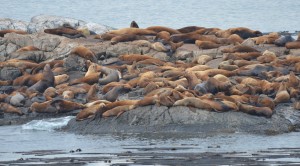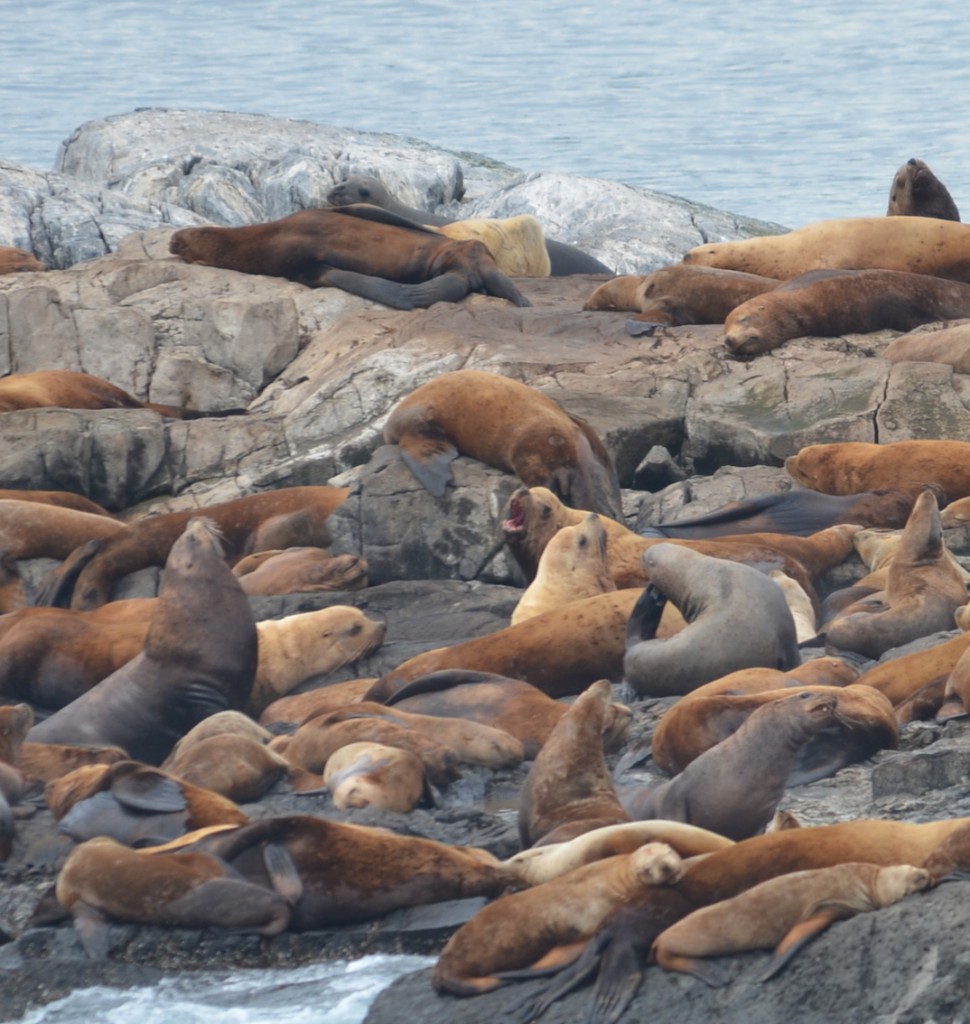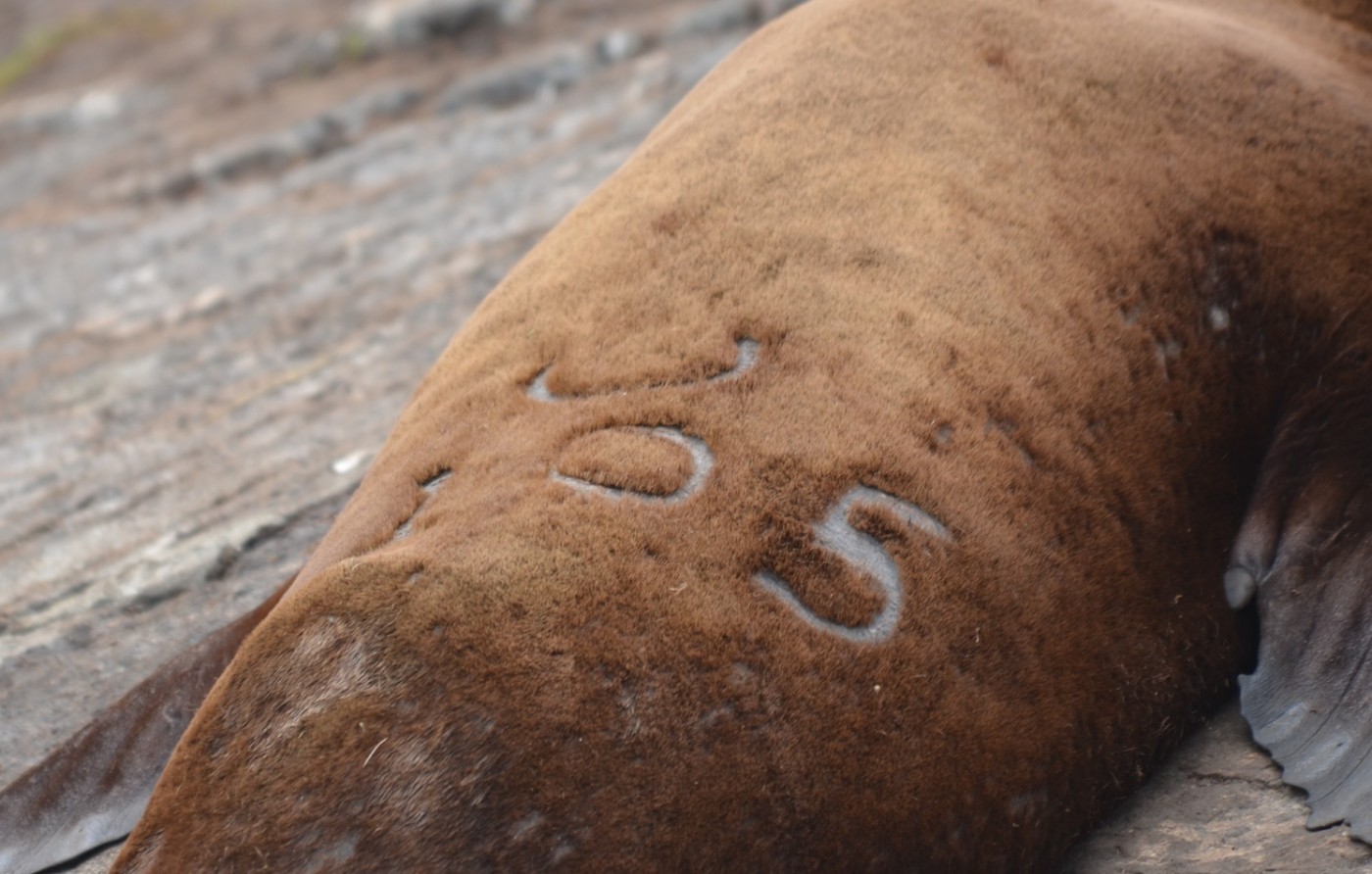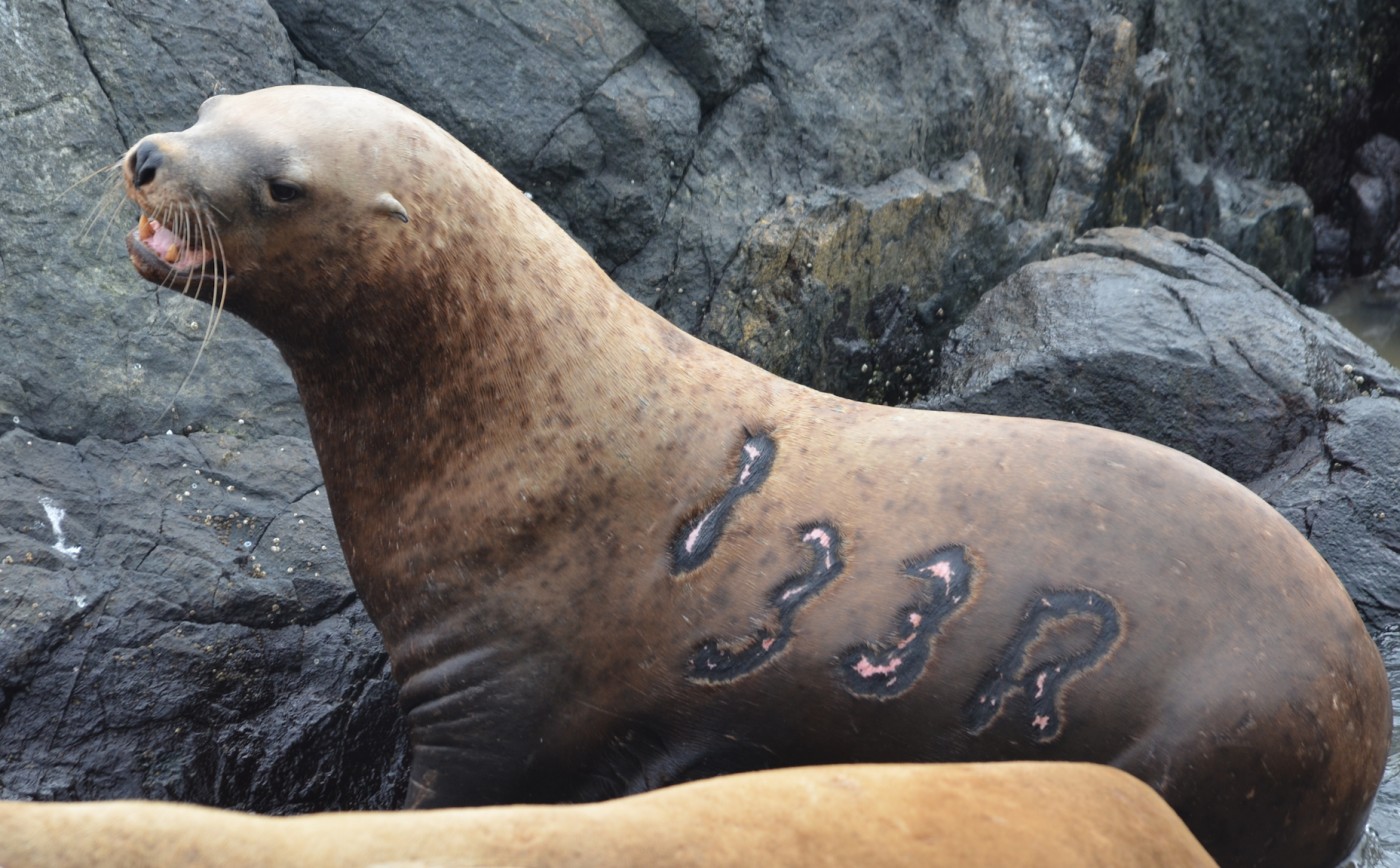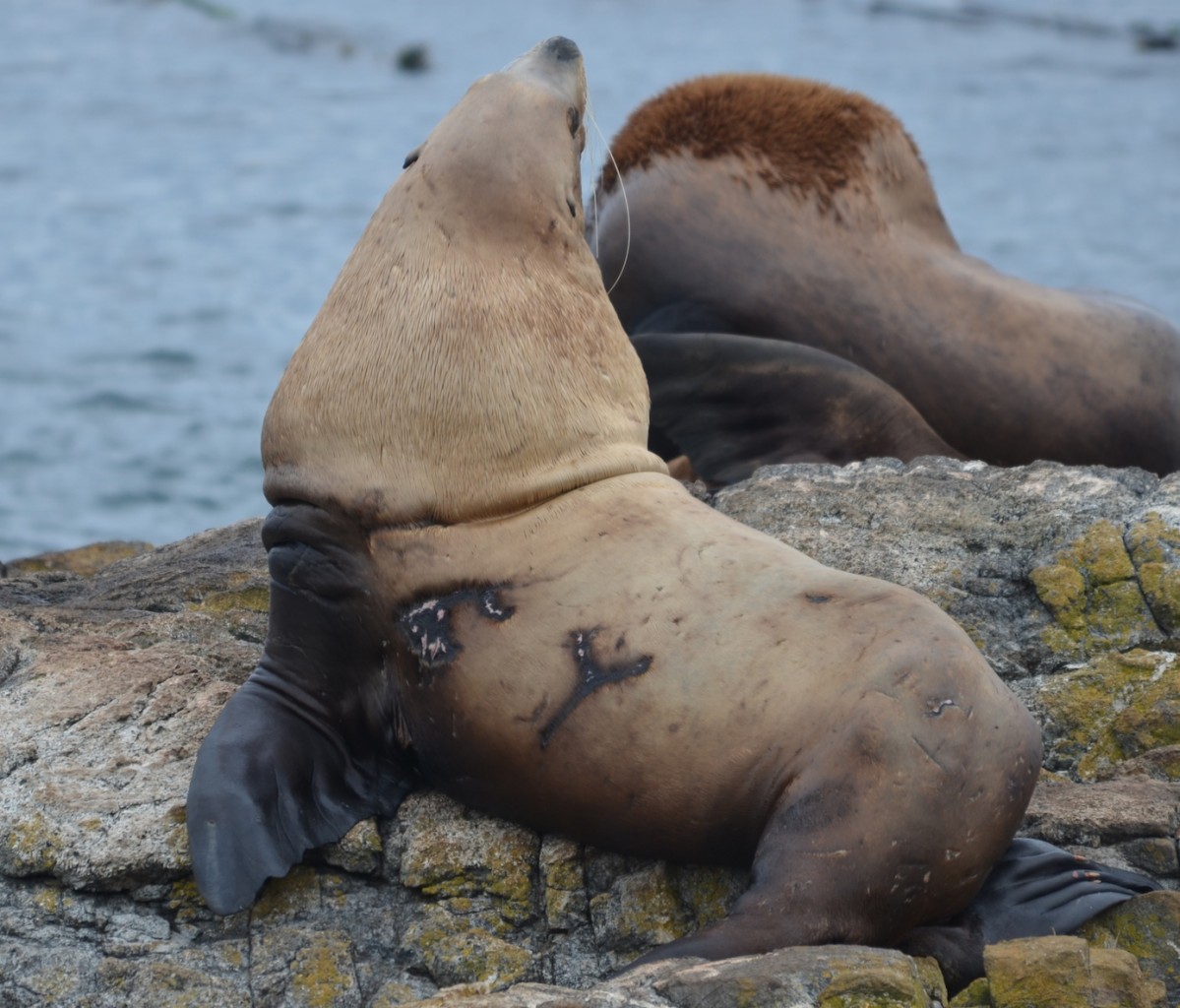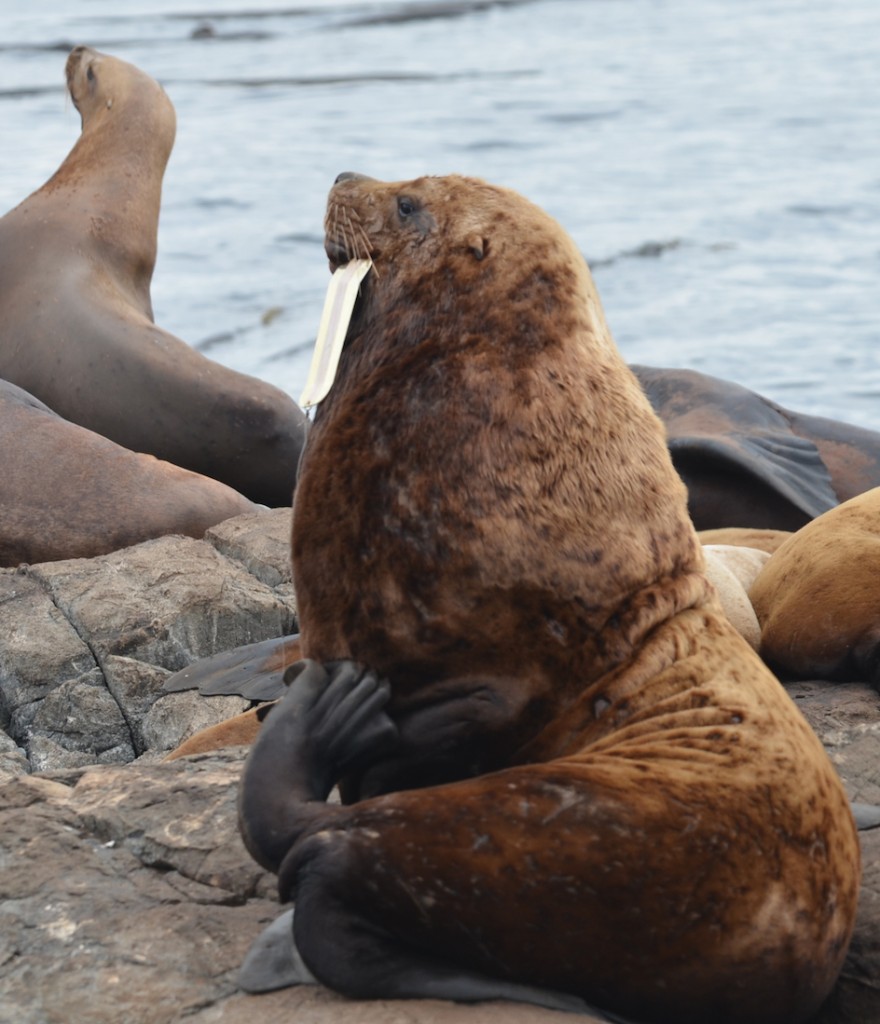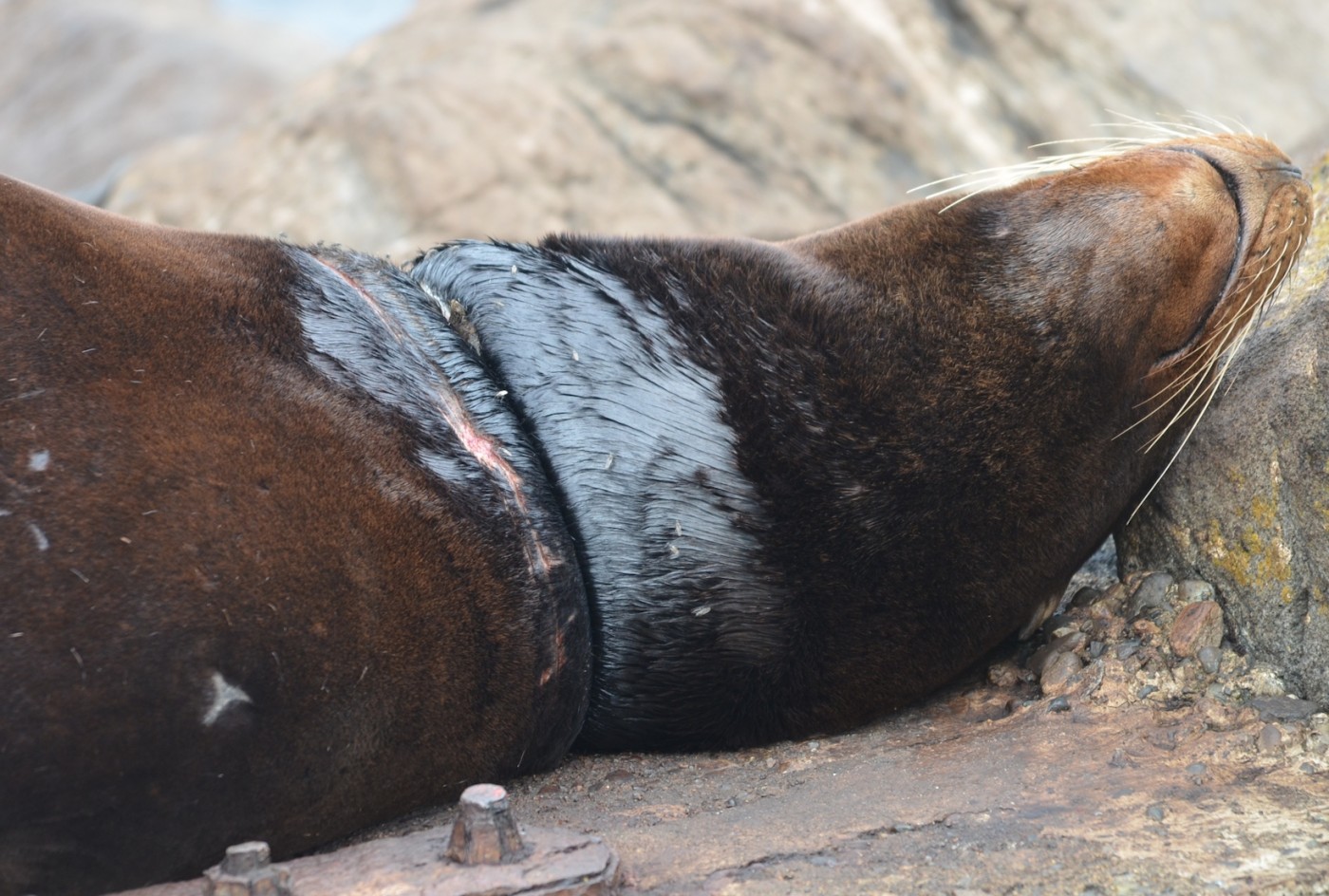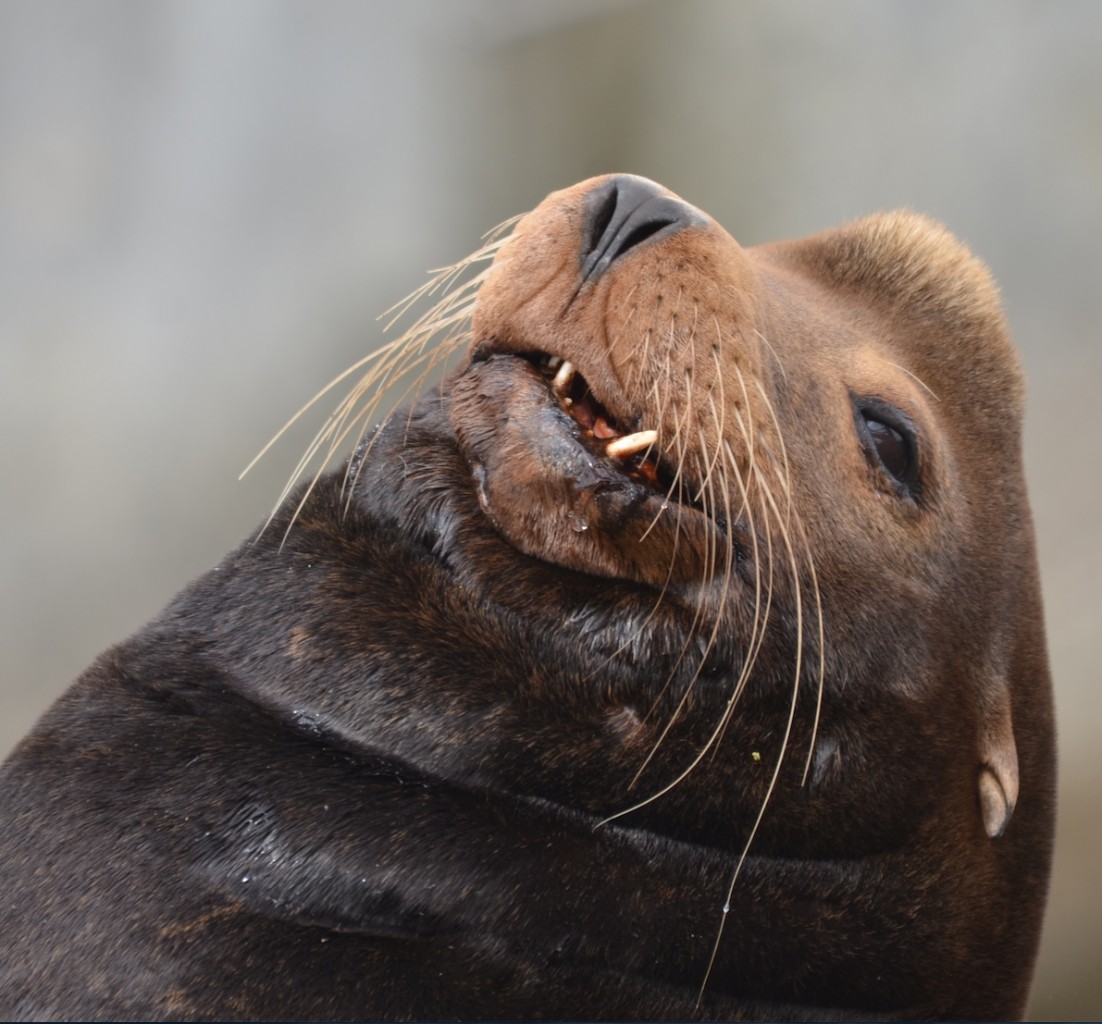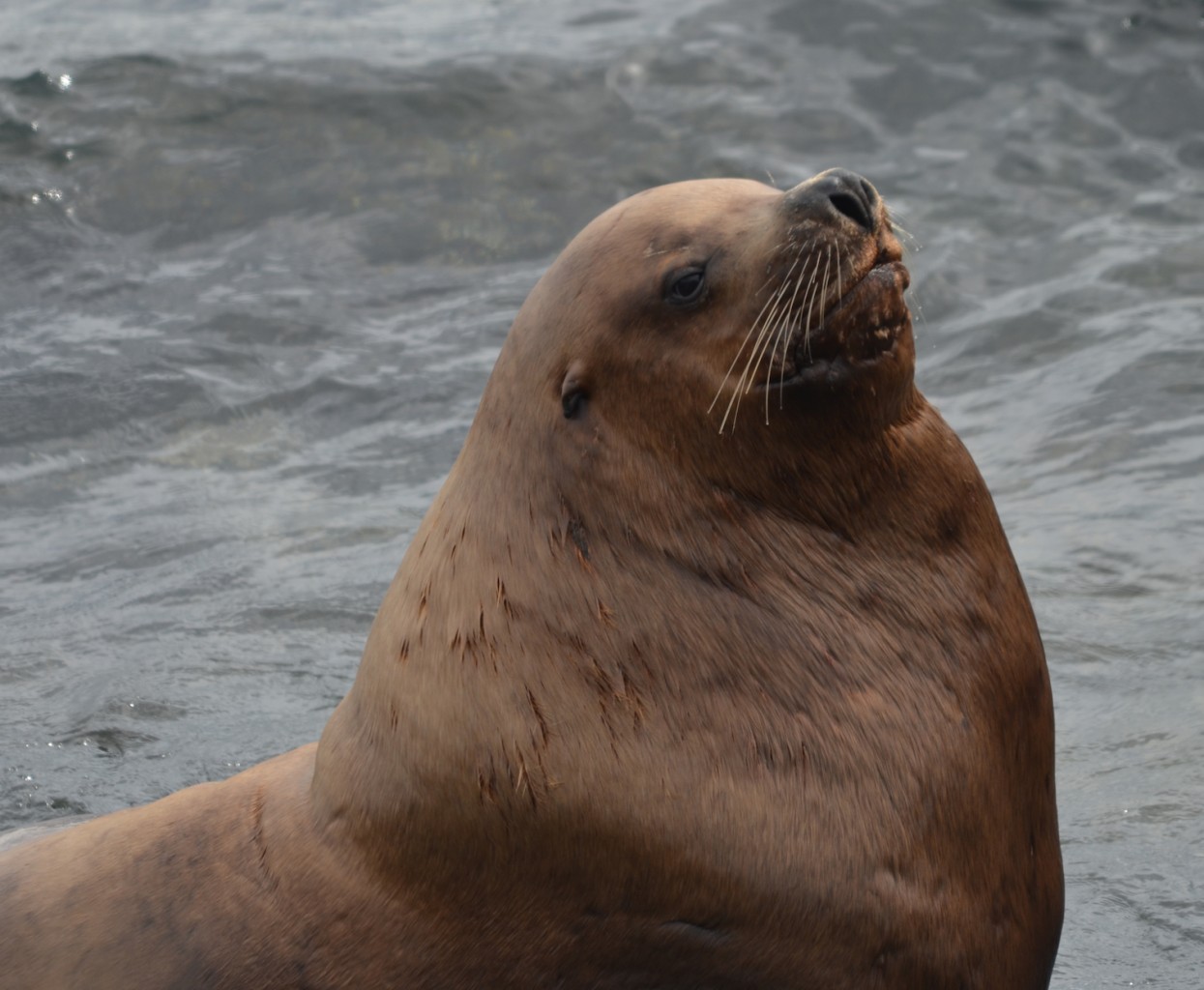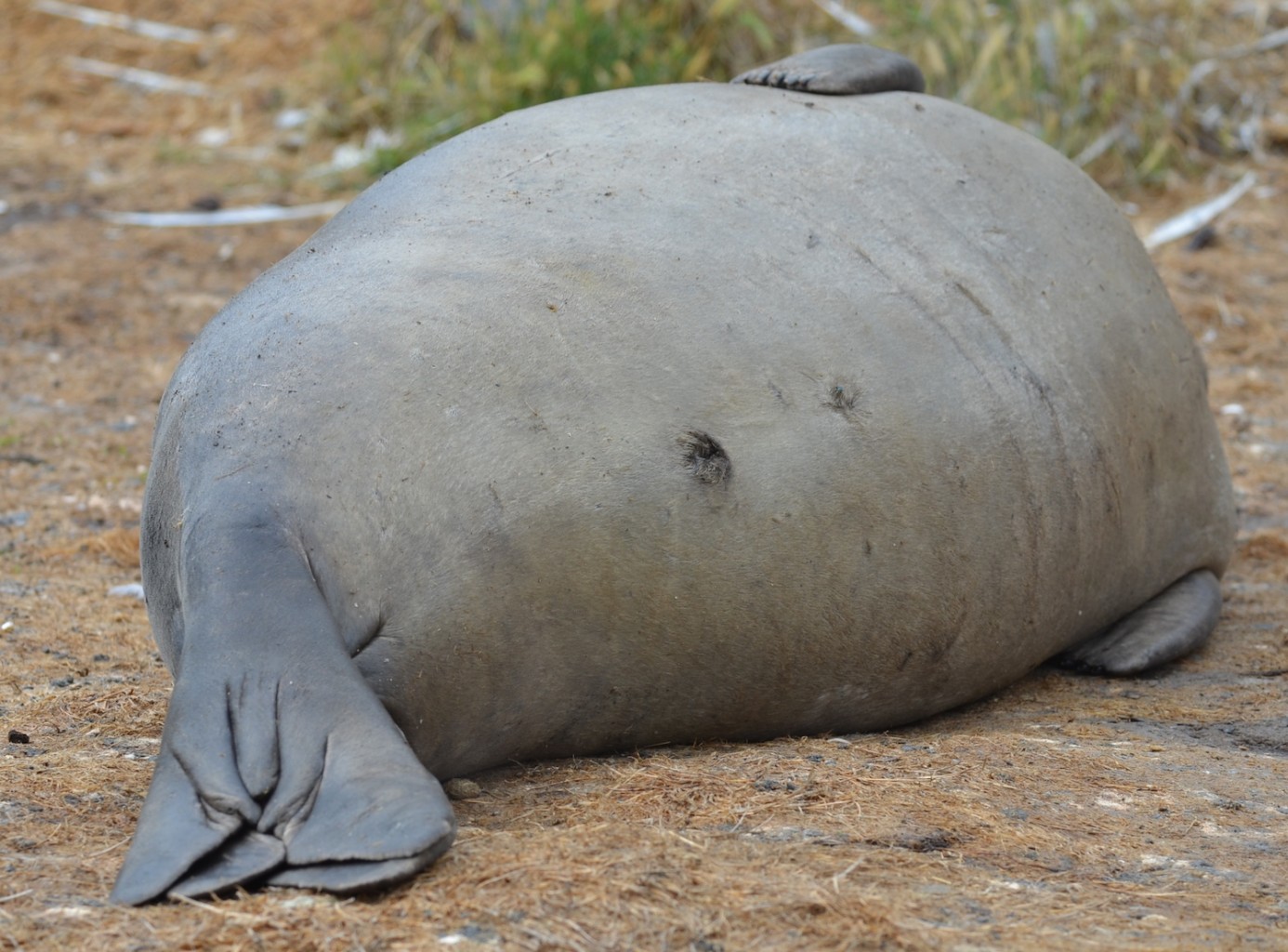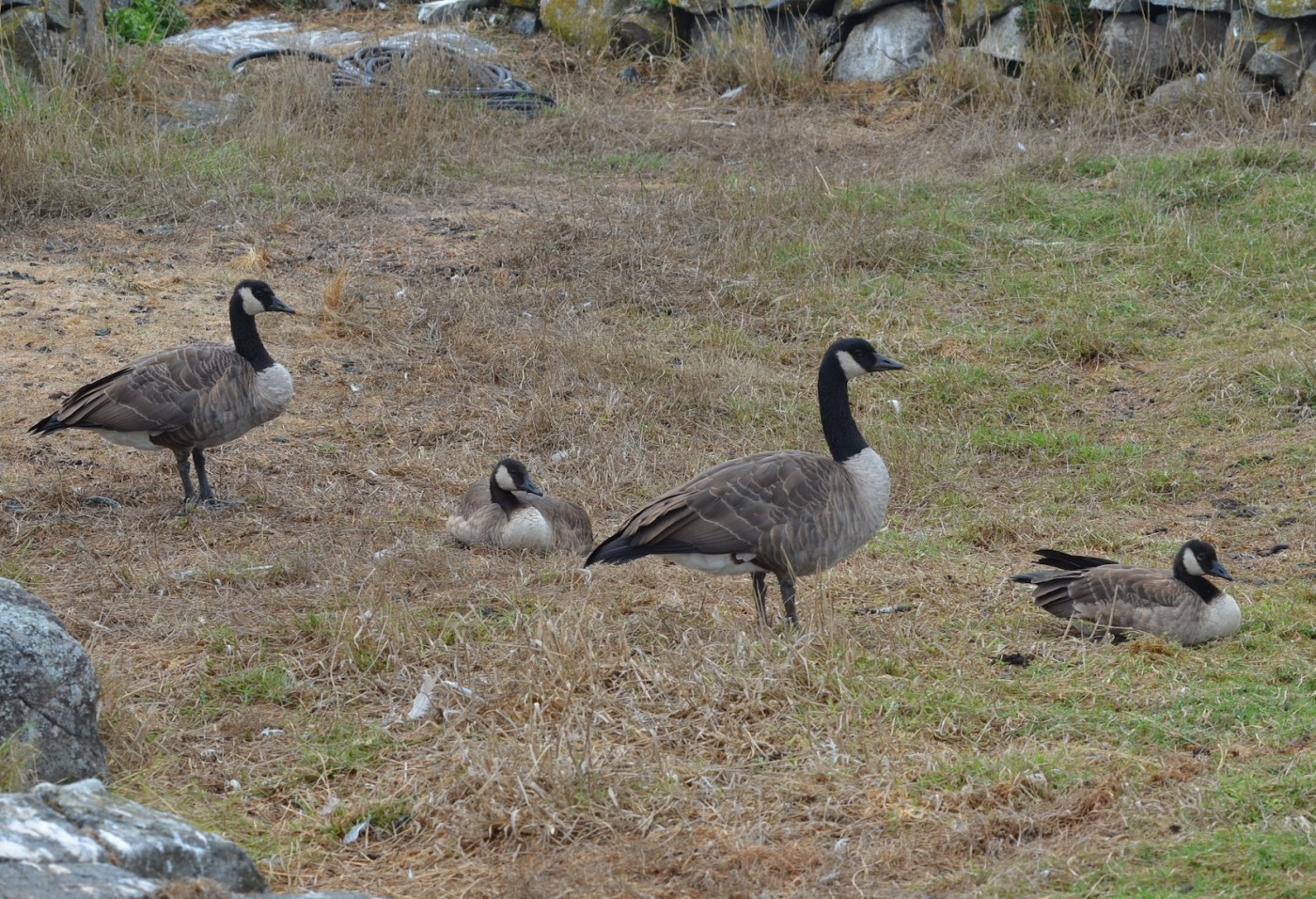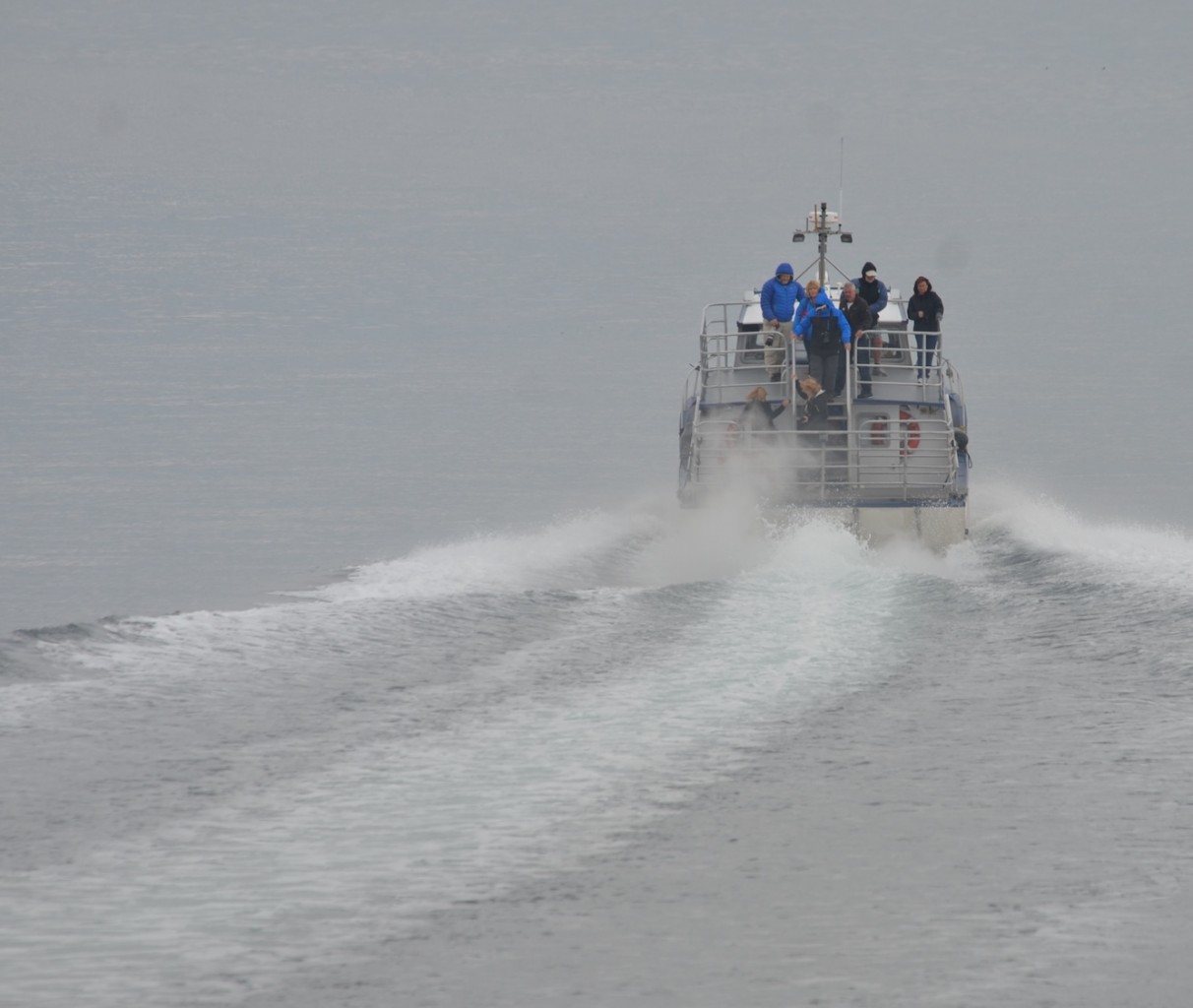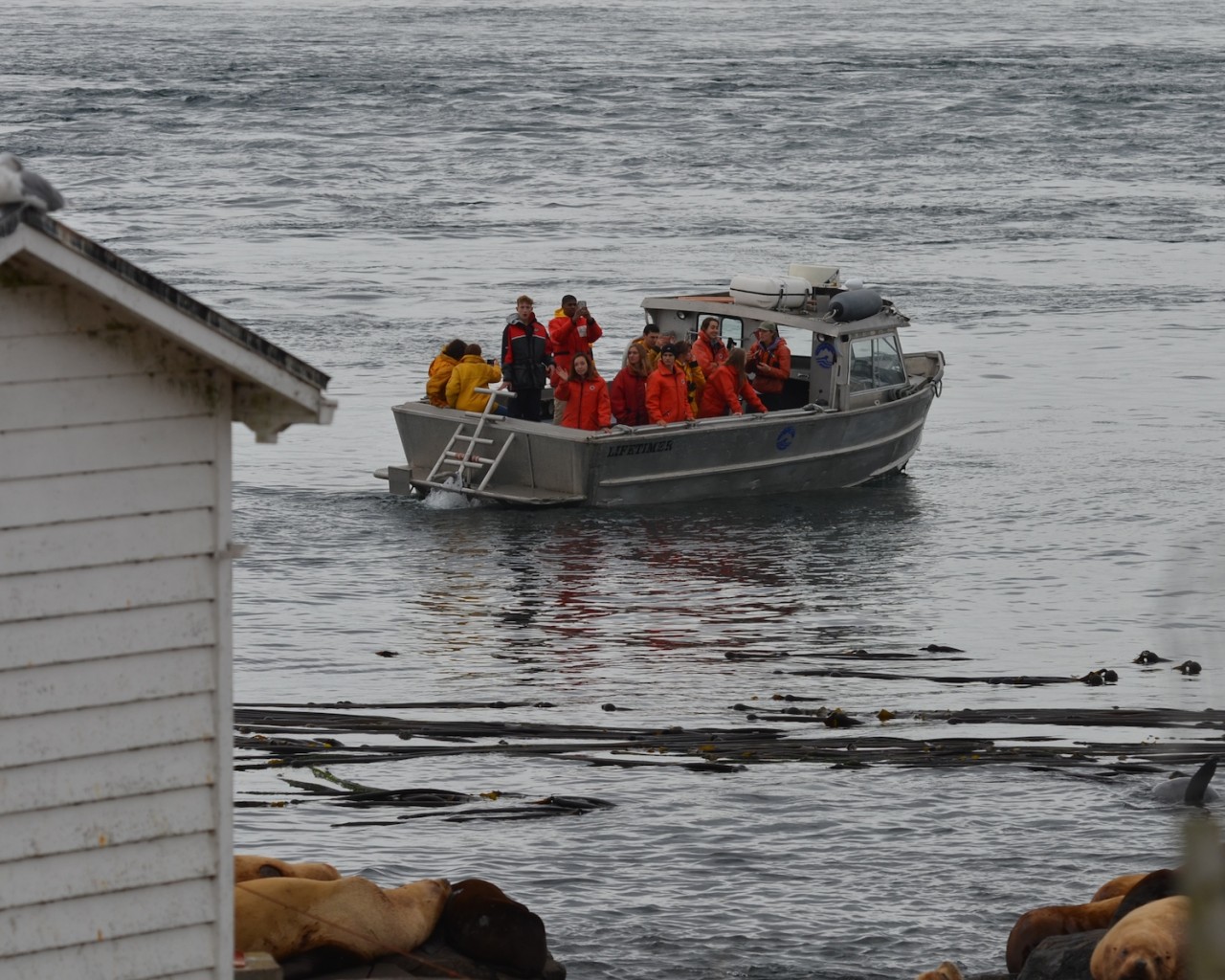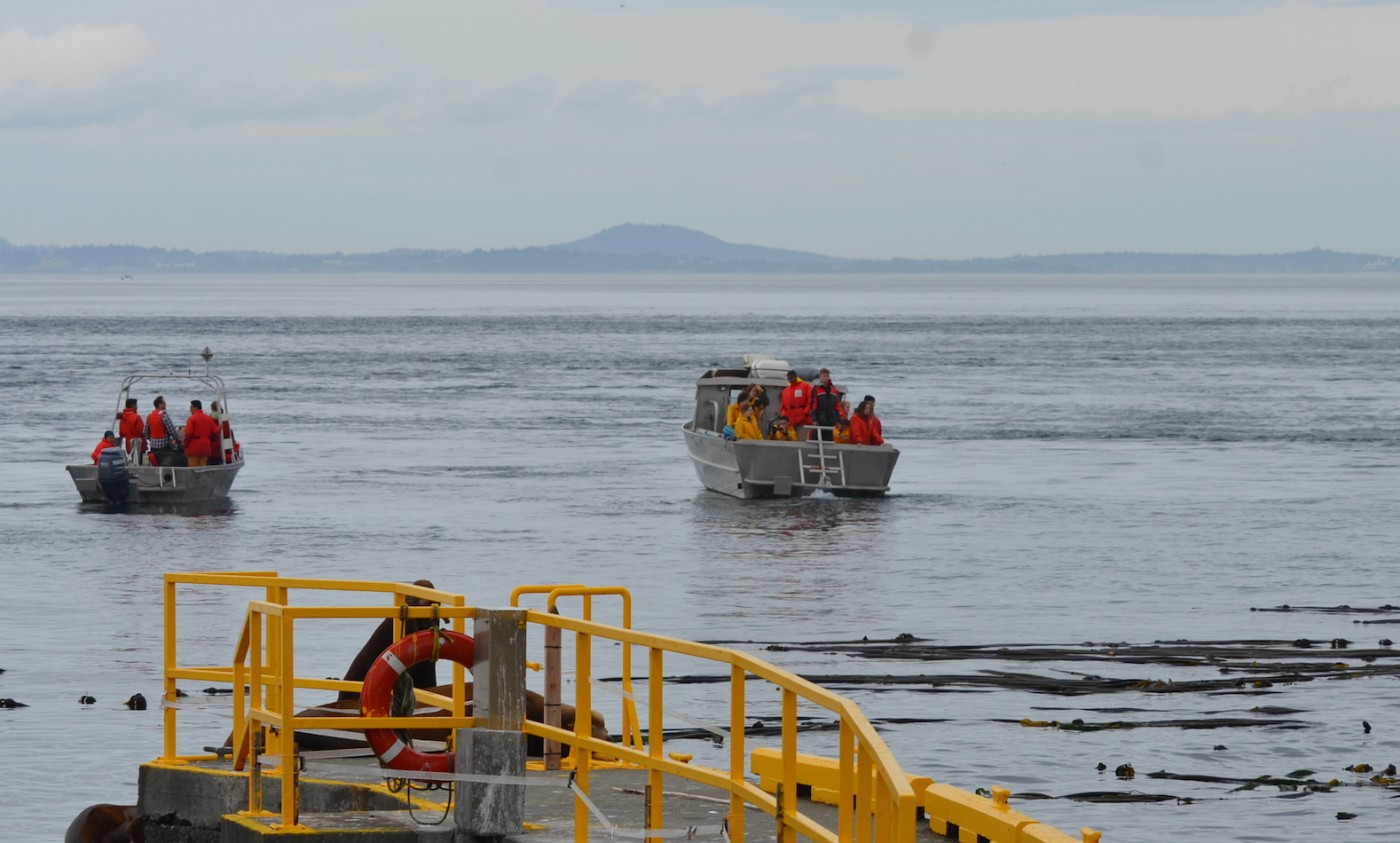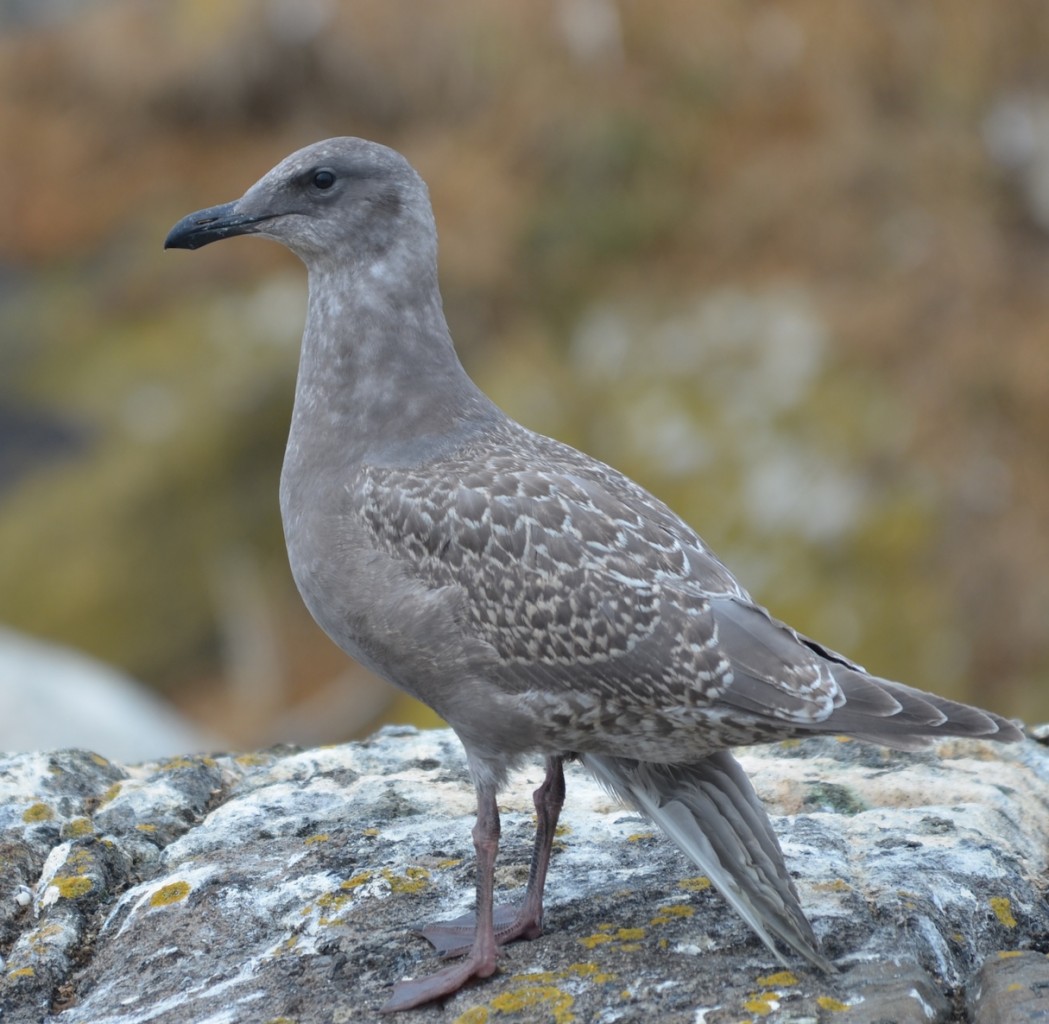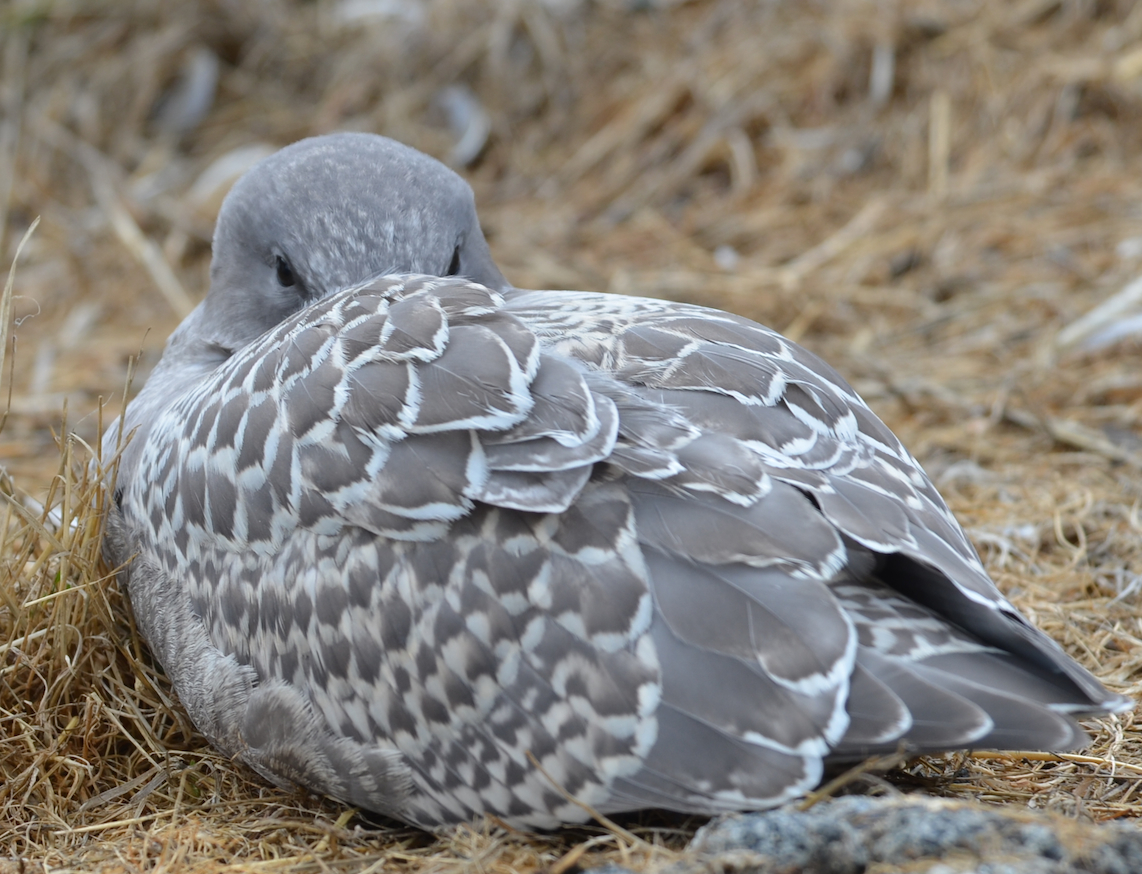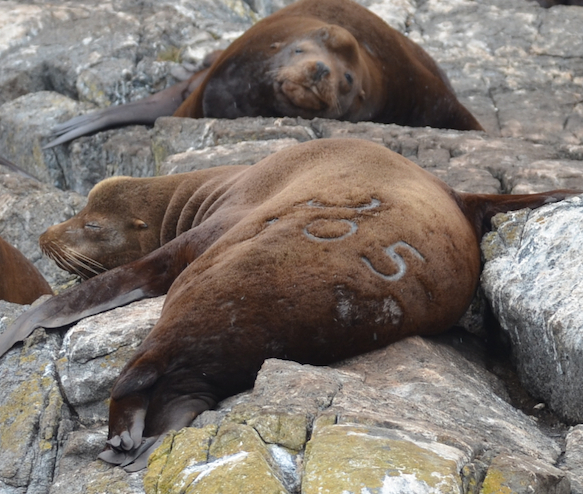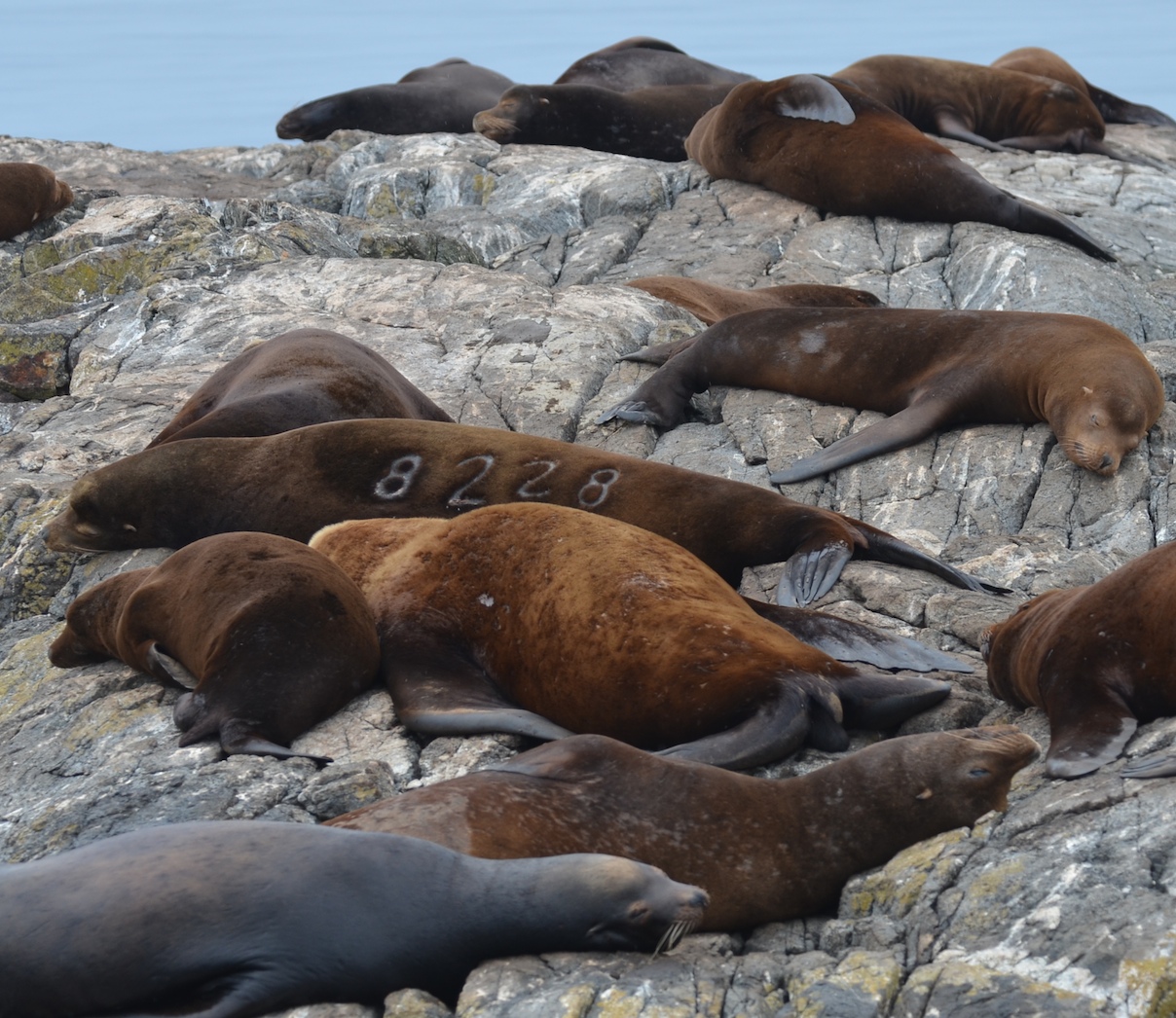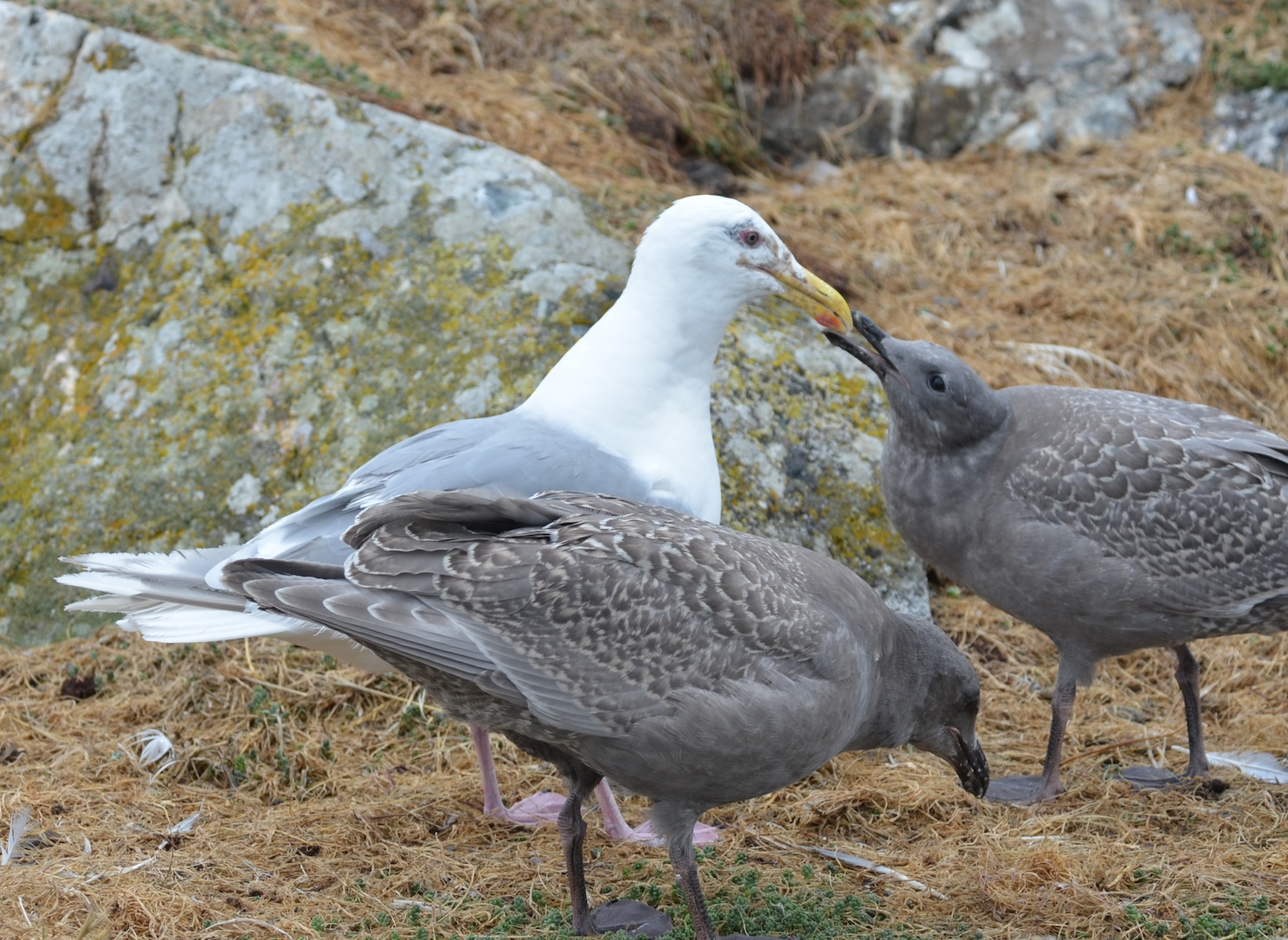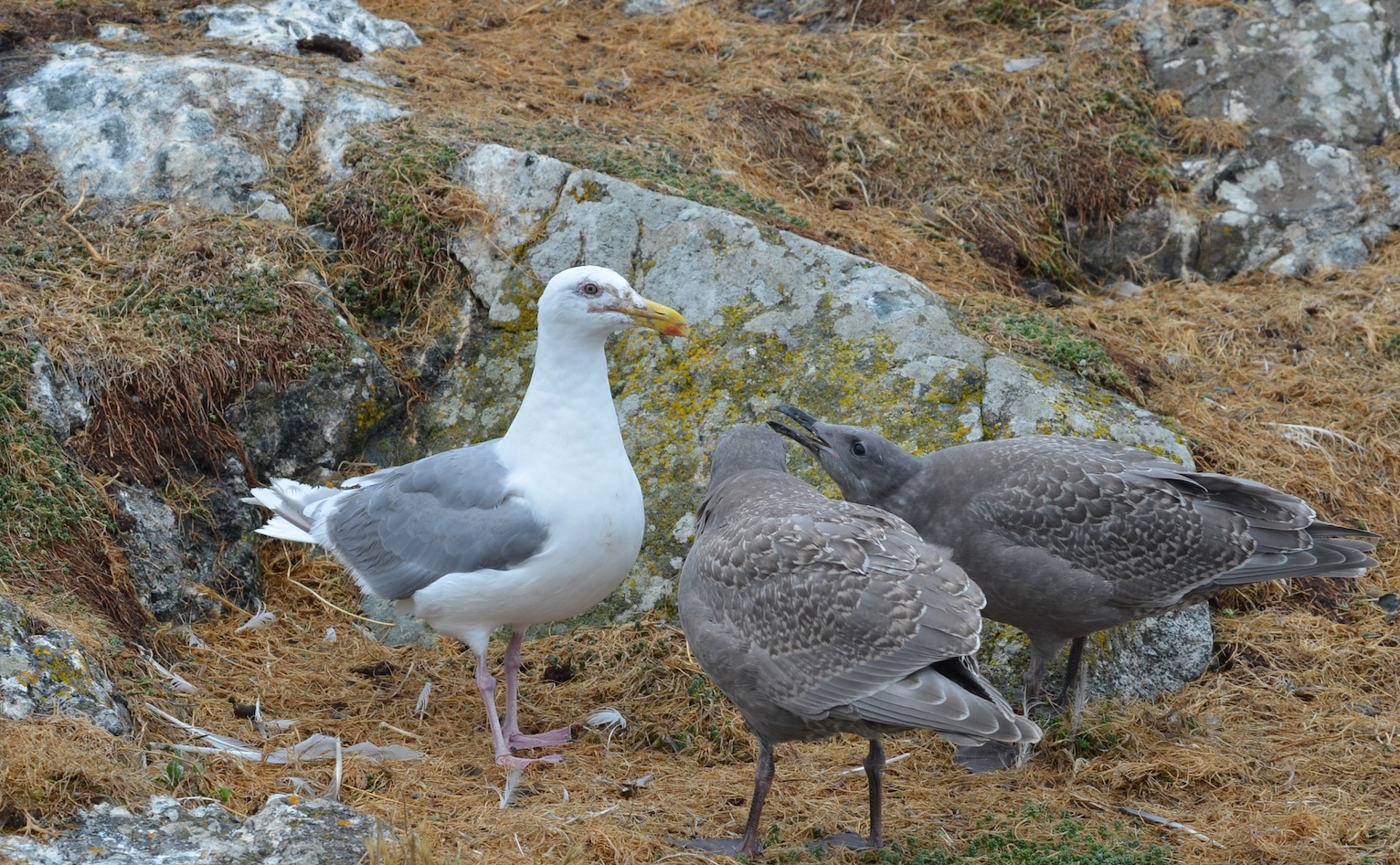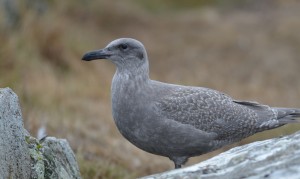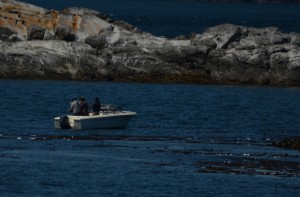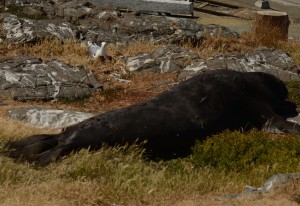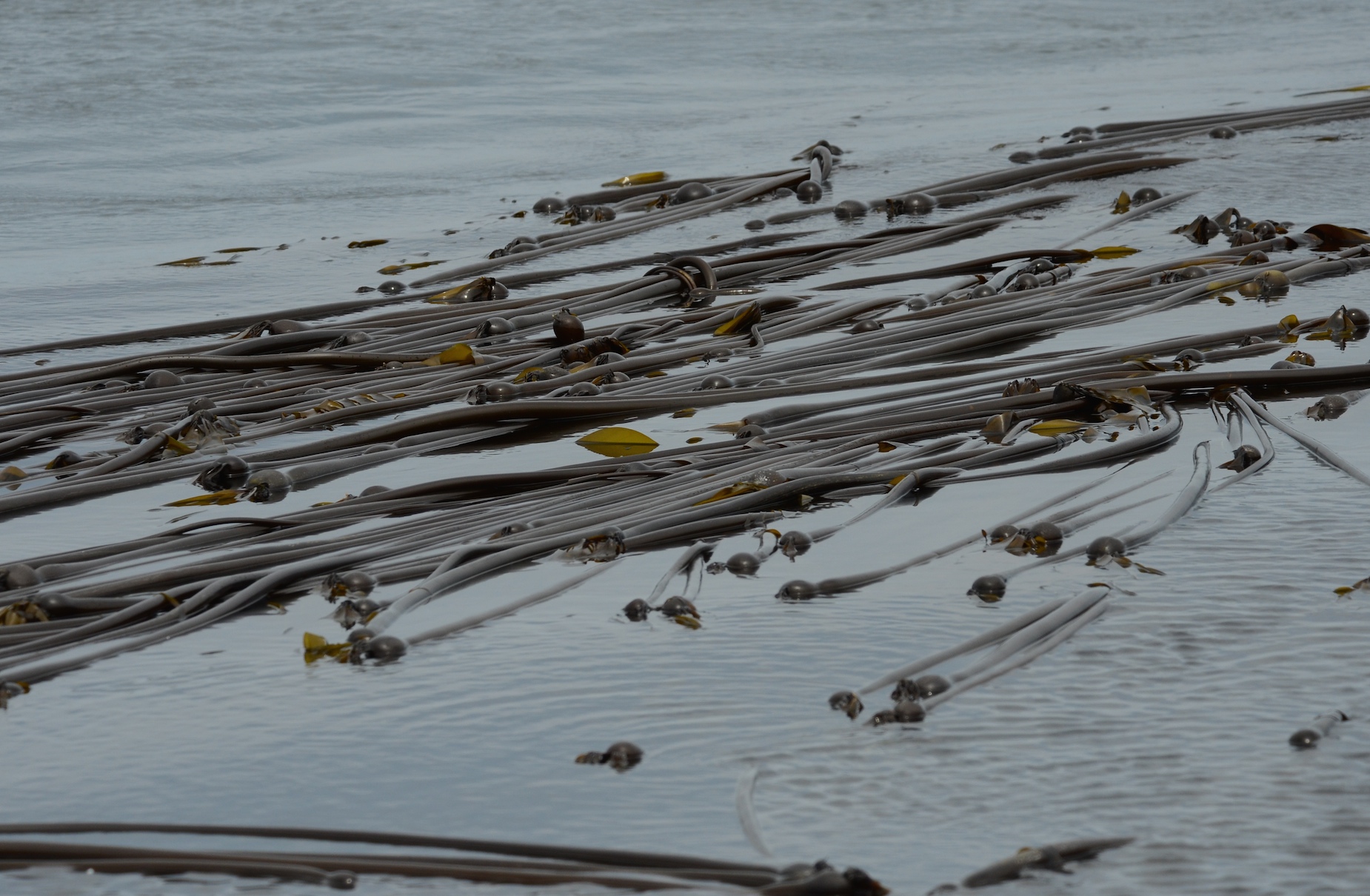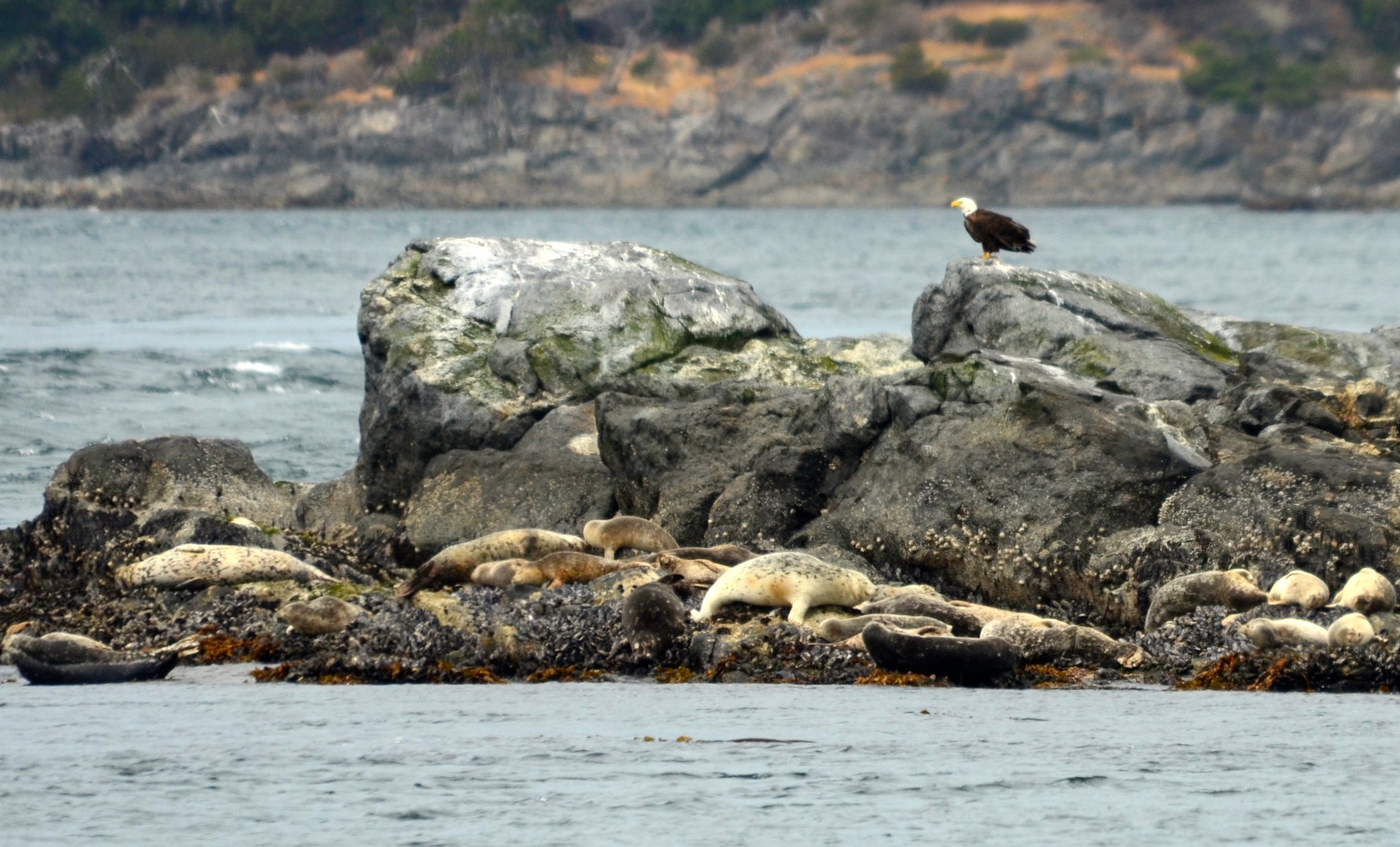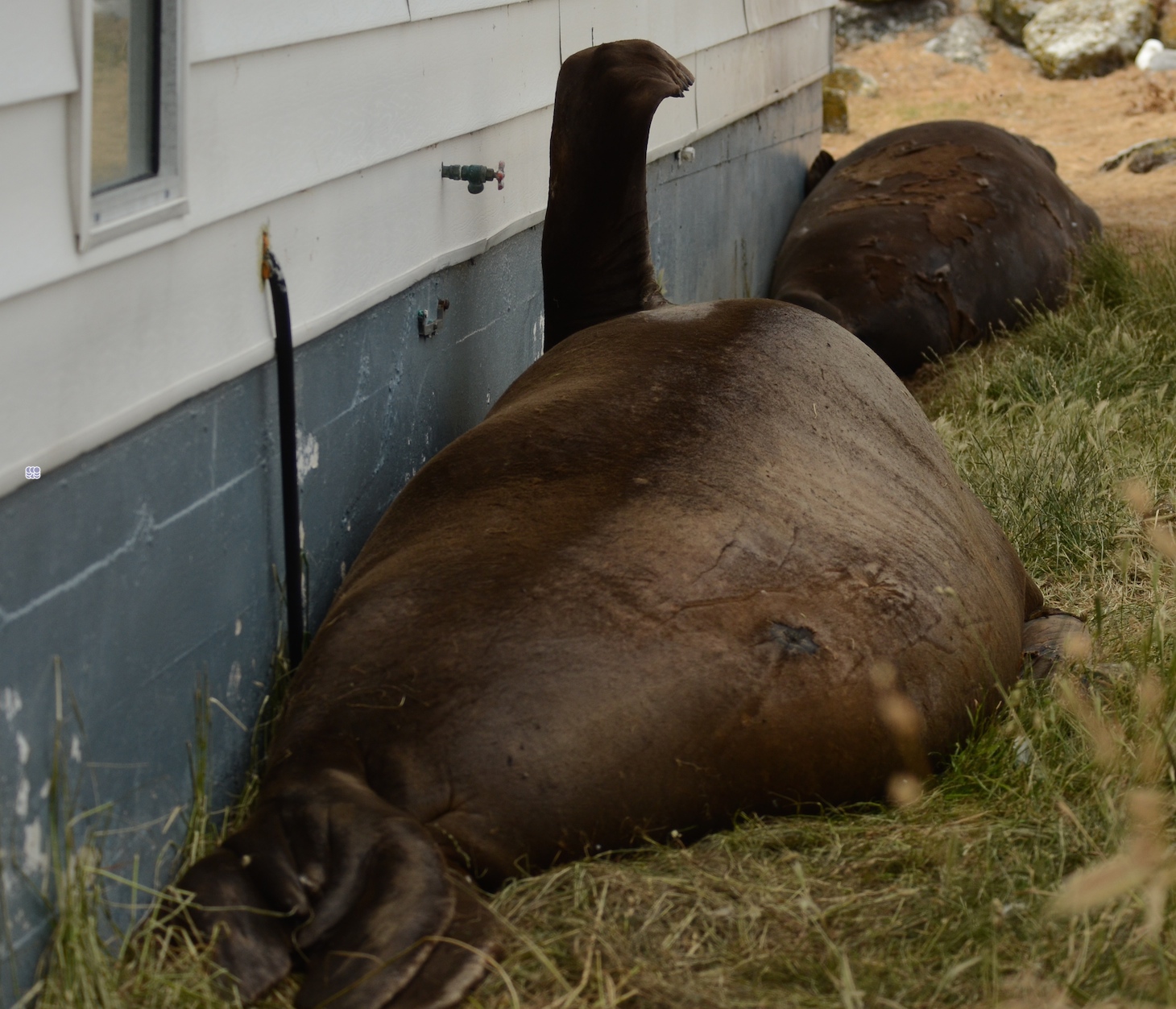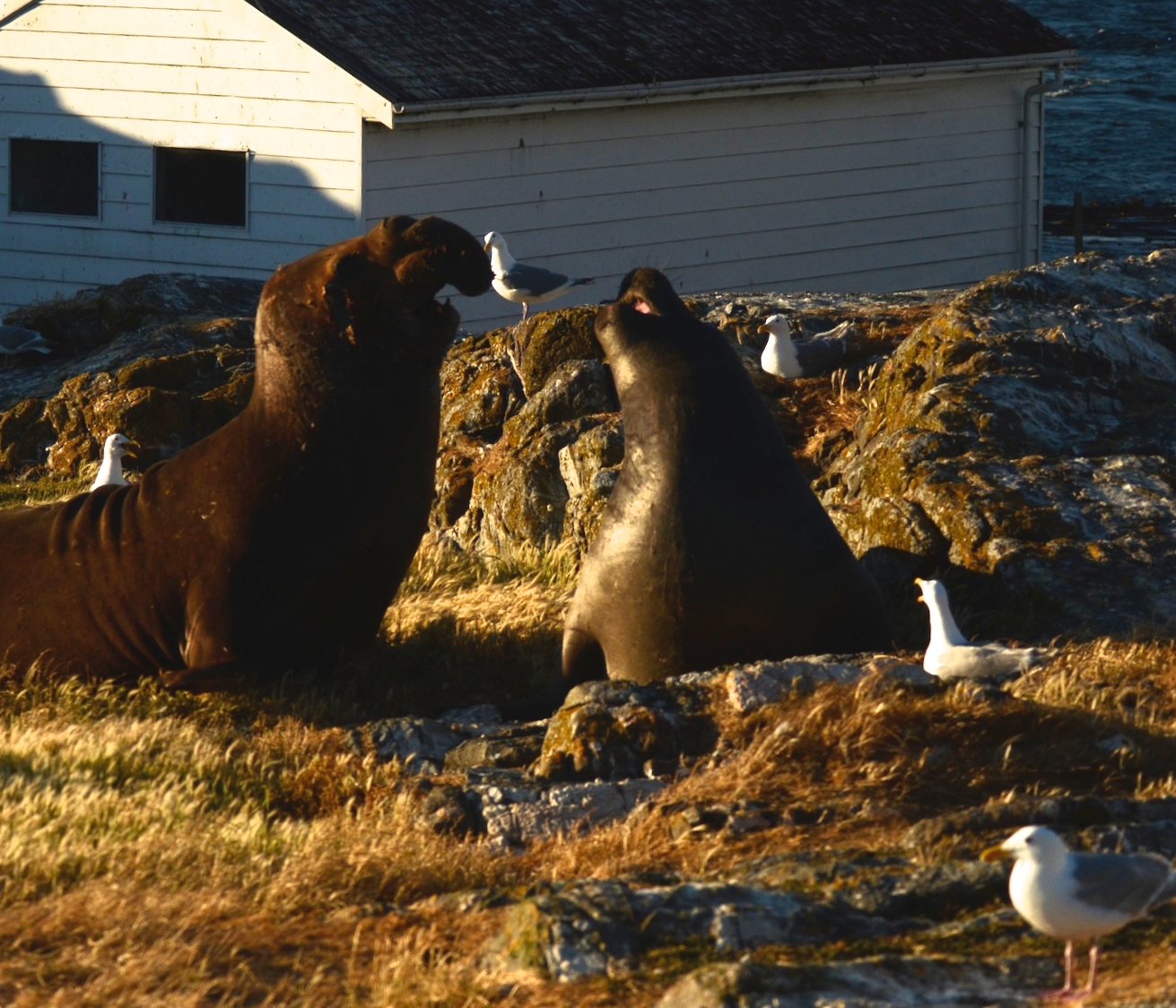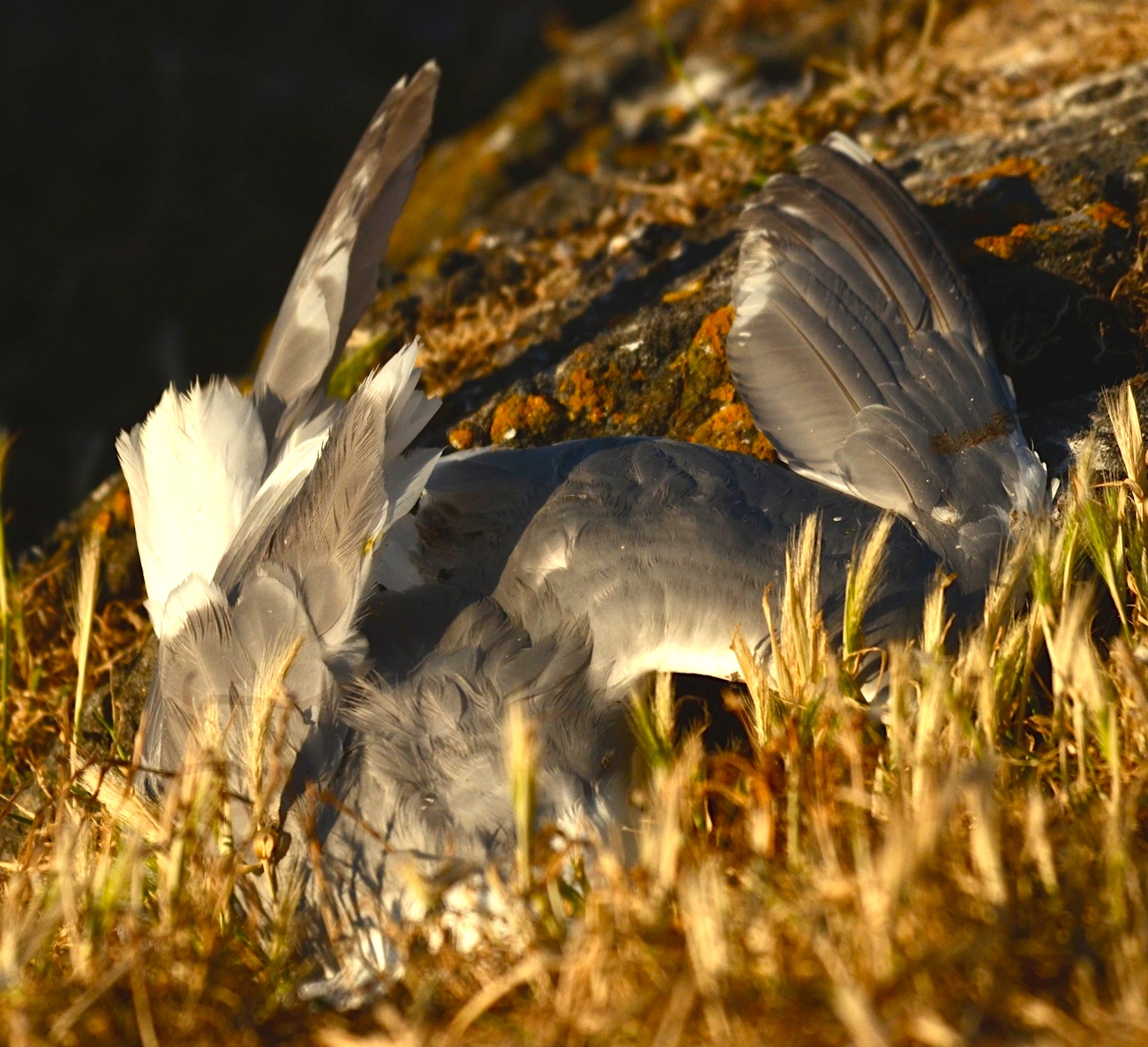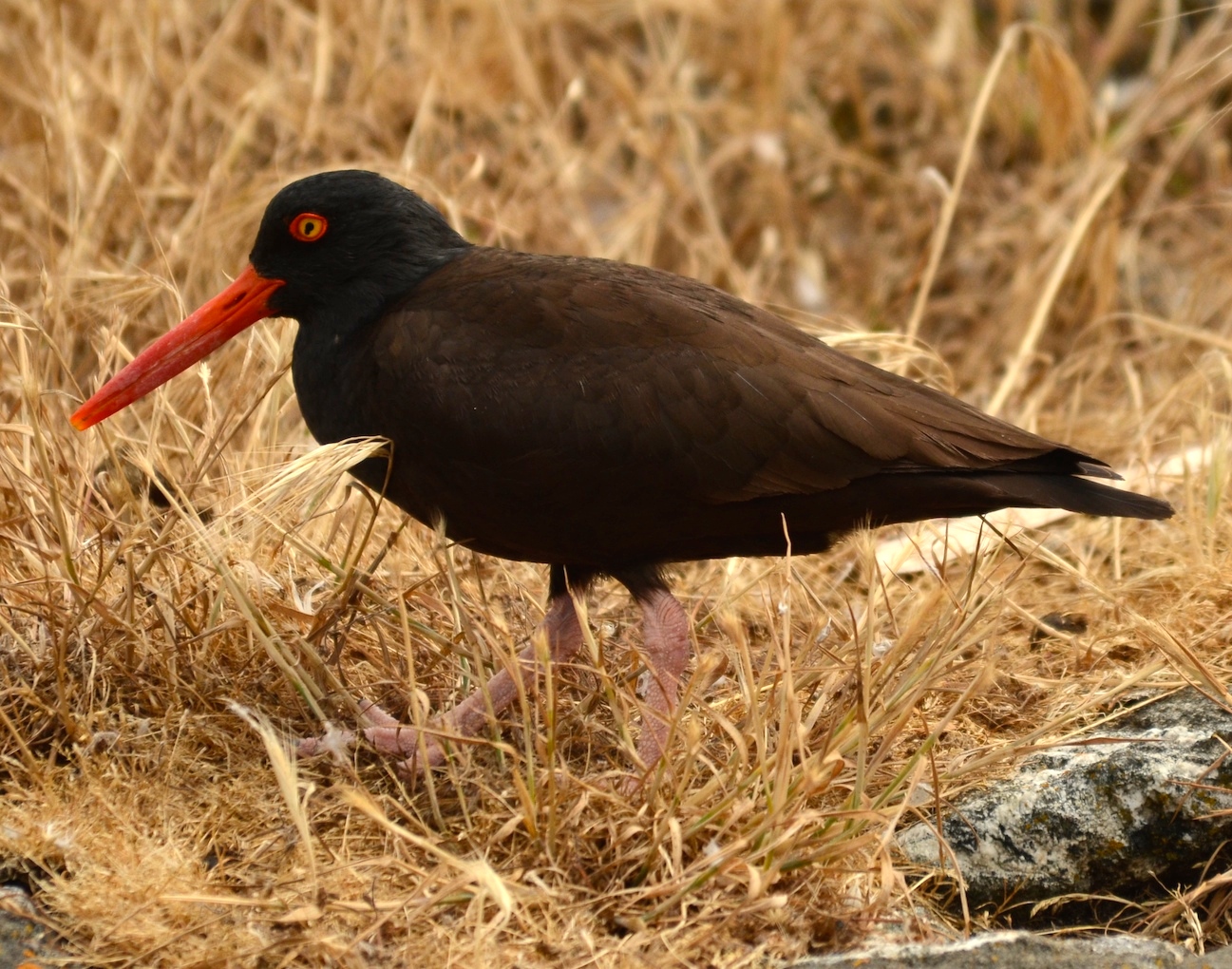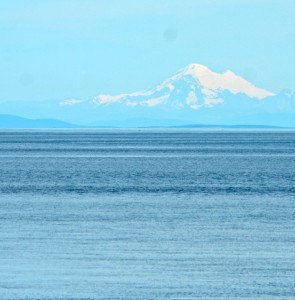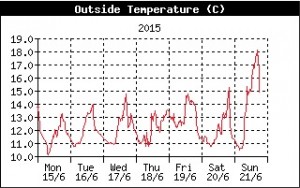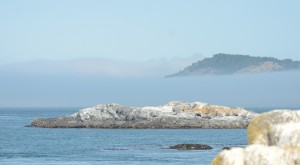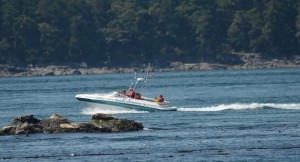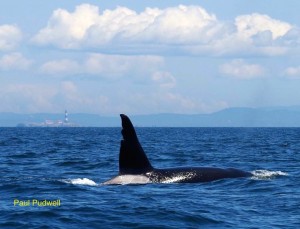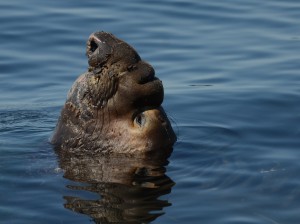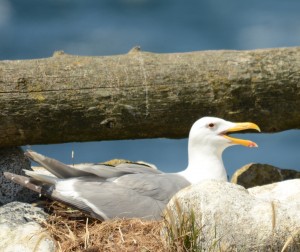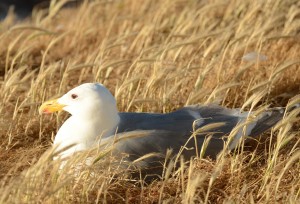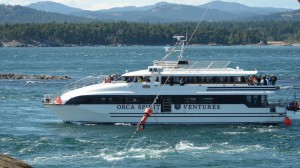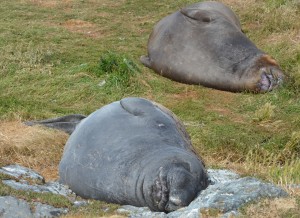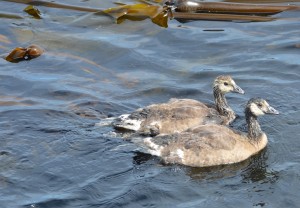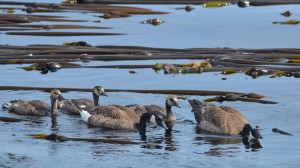It was a fairly quiet, dark and damp day at Race Rocks. The wind had still not done much by 18:00 but it rose out of the west later on blowing 20 – 25 knots. Although the ceiling was generally much higher than yesterday, solar radiation levels remained low, compared to the rest of the week, including stormy Saturday. The barometer dropped a little today, but remained above 1005 hPa and the forecast is for strong afternoon west winds to also bring much needed precipitation until Friday.
The weather pages on this racerocks.ca web site have lots of good data. If you like graphs or if you would like to learn to like graphs, check out the weekly solar radiation data graph to see how dark it has been lately.
It was another busy day for commercial whale watching activity in the Ecological Reserve with 17 visits observed. The main concerns were with a couple of vessel operators who are in a hurry and speed up before exiting the reserve. I really enjoy watching the better operators. They take their time; use the current to enhance their visit and make sure that their clients have a good experience, while assuring a sustainable future for their industry in the Ecological Reserve.
Four groups of Pearson College students visited the Ecological Reserve today as part of their orientation week activities. They were in the two vessels Haiku and Second Nature.
More sea lions appear to be arriving daily and I look forward to doing the census later this week. I have also documented a number of branded and tagged sea lions and data that will be shared with NOAA biologists. Today there were two Northern Elephant Seals on the island, the young male from the ramp yesterday moved up behind the boathouse and a similarly sized individual arrived on the ramp today with a crowd of California Sea Lions. Only one Elephant Seal was visible on Middle Rock, surrounded by Stellers Sea Lions.
Other less welcome arrivals were ~24 Canada Geese. I guess now that there are a few green shoots again; they are here to eat them. There is still a family of five, whose goslings were late to hatch, that looks like it hasn’t left yet.
I was busy with minor chores today, including the usual plus repairing the jetty fence twice, cleaning the camera, running the generator to bring the batteries back up and assessing generator use, de-salinator hours and various fuel quantities on hand for month end. I did make time to take a few photos and have included them in a gallery for your viewing pleasure.
- Elephant Seal top left.
- The missing number U105.
- Back again but more legible.
- Back again but less legible.
- Flasher king – ouch
- Not sure if the ‘necklace’ is gone or just cut in so far as to not be visible. Good candidate for recovery.
- Ouch – messed up mouth.
- Big healthy looking Stellers Sea Lion
- Rotund, young male elephant seal.
- Successful Canada Geese parents with two goslings.
- In such a hurry the guests are clambering down the ladder at high speed.
- Second Nature visits reserve with students
- Haiku and 2nd Nature heading off with the first two groups of Pearson College students.
- I hope this gull’s wing is just drooping otherwise it is in real trouble.
- Here’s a juvenile Glaucous-winged Gull with beautiful plumage.

